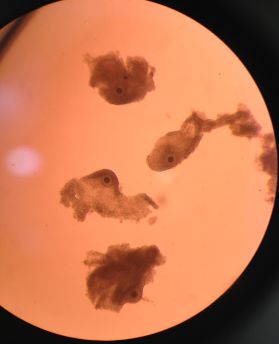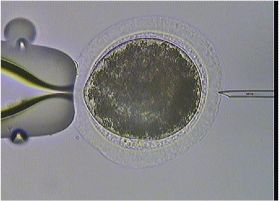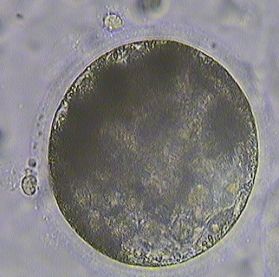OPU and ICSI
Interest in the use of equine assisted reproduction technologies (ARTs) such as intracytoplasmic sperm injection (ICSI) has rapidly increased worldwide in recent years and there are now more than 2000 procedures being done annually in Europe alone.
(opens in a new window)Watch TWICSI’s story on the bbc.
What are the steps involved?
 Ovum Pick Up
Ovum Pick Up
The eggs are first removed from the mares’ ovaries in a non-surgical procedure performed under standing sedation called ovum pick up (OPU). OPU can be performed throughout the year as long as the mare has a sufficient number of follicles present (>15 ideally). The only tests and interventions that need done prior to OPU are ultrasound scanning to ensure active ovaries and a blood test and swabs for the purpose of export.
The procedure itself involves trans-vaginal aspiration of all visible follicles on the ovary. Each follicle is entered and flushed individually with an expected recovery rate in the region of 50-60%. The oocytes are then processed in a sterile and temperature controlled manner before being packaged and shipped overnight to an ICSI laboratory. At present this is mainly Avantea in Italy.
 Maturation and ICSI
Maturation and ICSI
On arrival at the ICSI laboratory the oocytes are placed in media containing hormones to allow them to mature for approximately 26-30 hours. Approximately 60% of the oocytes will respond to the maturation protocol. Upon completion of the maturation step, a small section of a frozen semen straw from your chosen stallion is thawed and semen is prepped for ICSI in order to select the most viable sperm cell. ICSI is then performed on each individual mature egg by the injection of single sperm cell straight into the cytoplasm of the egg.
 Embryo development and transfer
Embryo development and transfer
The injected eggs are then allowed to develop in an incubator for 6-9 days until they reach the blastocyst stage (Photo 3). At this point they are either frozen or transferred fresh to a recipient mare. If frozen, embryos are shipped to the location of the recipient mare where they can be thawed and transferred at a later date.
Why choose ICSI?
While AI and ET are widely available and veterinary reproductive medicine has become very advanced, there are still some mares and stallions from which foals cannot be produced. It is these individuals that can benefit most from ICSI. Ideal scenarios include:
- Mares who have repeatedly failed to produce embryos from conventional ET. As the eggs are removed directly from the ovaries, the entirety of the reproductive tract is bypassed. Therefore issues such as oviductal blockage, cervical abnormalities and chronic endometritis can be overcome.
- Stallions with limited availability of frozen semen. Many sought after showjumping and eventing stallions have passed away and/or have a limited number of straws remaining. While AI with a single straw can be successful in some cases, using a single straw for ICSI can result in multiple pregnancies. In fact, only a fraction of a straw is thawed for each ICSI session and this can be used for several mares.
- Stallions with low fertility. Only ONE sperm is required, therefore ICSI can be used to overcome low motility and many other semen abnormalities as long as the DNA in the sperm is intact.
- Salvaging valuable genetics. Eggs and sperm can be harvested from ovaries and testicles post mortem in the event of a catastrophic accident or fatal colic episode.
What results can you expect from OPU/ICSI?
OPU/ICSI has proven successful and is now routinely used throughout Europe to produce sport horse offspring. Approximately 75% of OPU sessions will result in production of at least 1 embryo, with the average number of embryos produced being 1.7-2. There is a strong mare effect on the process; mares that yield a high number of embryos at the first attempt are likely to do so again, however the opposite is true for mares that fail to produce embryos. Success relies on the mare having a sufficient number of follicles present on the ovaries and factors such as mare and stallion fertility, presence of uterine disease, fitness, and advanced age (>23 years) will influence results in individual cases.
Transfer of ICSI embryos results in similar pregnancy rates to those for fresh embryos flushed from a mare (approx. 70%) however there is a slightly higher embryo loss rate so the actual live foal rate per embryo transferred is 50%. While OPU/ICSI can be successful it does come at an increased cost so the offspring produced should merit this expenditure either financially or sentimentally.
If you think you have a mare suitable for OPU/ICSI, please contact (opens in a new window)Niamh.lewis@ucd.ie